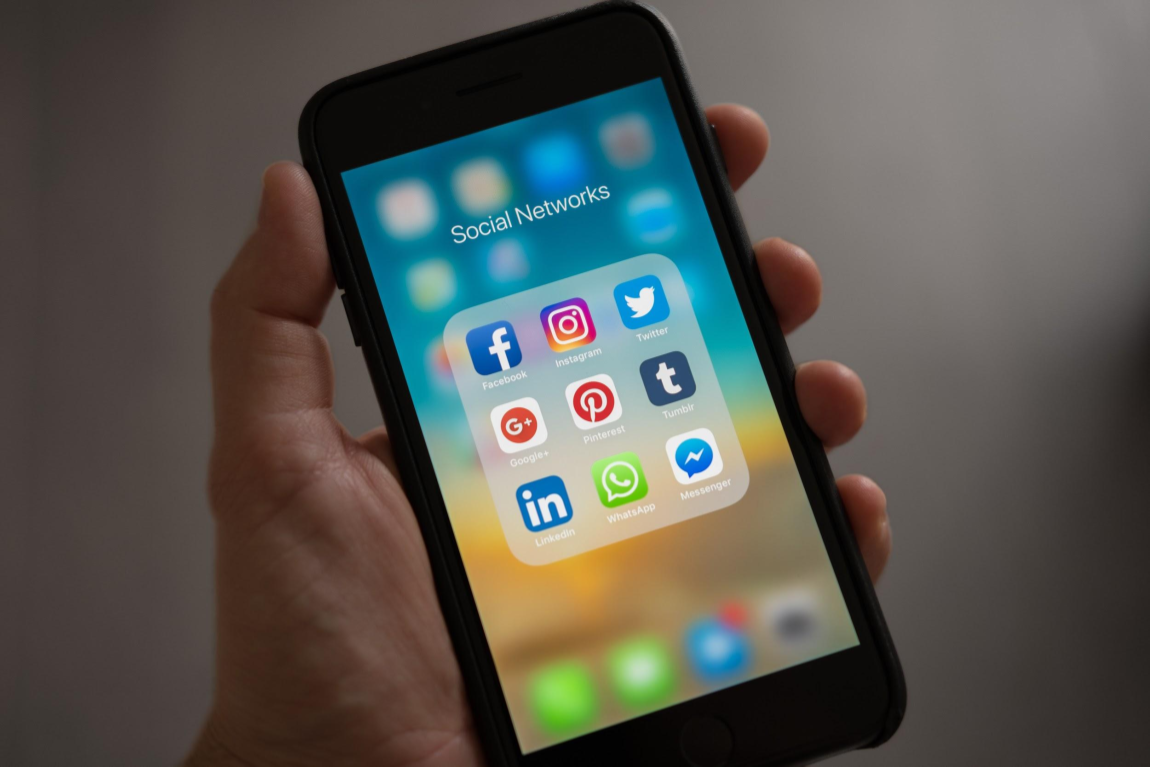B2B Myth of the Week: We Don’t Need To Hire A Dedicated Social Media Person
by MGB2B
The Myth: We Don’t Need To Hire A Dedicated Social Media Person
The Truth: Social Media Success Requires A Dedicated Role
One of the best things about social media is its simplicity. My father uses Twitter, and he can barely forward an email. But this is where the simplicity ends. Using social media as a marketing channel is far more complex. If you’re thinking of having a staff member add social media to their existing duties, reconsider. There are solid gains to be made in the social landscape, but worthwhile results require dedicated effort. In short, good social media isn’t as simple as it looks.
First, Understand Why Social Media Presence is Vital
81% of the US population used social media in 2017, according to statistica. It is estimated that there were 2.34 billion users of social media last year. You can bet that folks who make purchase decisions on B2B brands were among them. If you have a dedicated person at the helm, the potential for increasing traffic and reaching new customers is limitless. A well-developed social strategy can humanize your brand and offer an efficient way for customers to engage with you. On top of this, market insights are made easy: consumer traffic and responses to certain posts show you what’s working and what isn’t in a very quick and digestible way.
Social Media is More Than Posting
Ok, so you know why you need it. But the benefits mentioned above don’t come from haphazard posting or “spraying and praying.” Here’s what a typical social media expert accomplishes:
Content strategies and calendars.
If you don’t have a firm set of goals, success can elude you. Having someone to create and update a specialized content strategy to push the brand forward and maintain its momentum is vital to your social media presence. This means strategizing a variety of blogs, white papers, infographics, and videos that all work towards the same end goal. On top of this, keeping a detailed schedule of uploads and posts provides a way to monitor the work so far and inform future ideas. This ensures nothing is being oversaturated, underutilized, or ignore. (Want to learn more about content strategies? Read this.)
Content creation and curation.
A social media person is responsible for figuring out what to post and when. This alone is fairly time-consuming. Even simple tasks like picking the right picture to accompany your blog take forethought. Your social media staff member is also responsible for directing what kind of content is needed and who will be creating it. In many cases, they’ll be jumping in and creating the content themselves. (You also need someone dedicated to creating great content, but that’s another topic altogether).
Analysis and Monitoring.
Social media moves fast. It’s hard to anyalize the data on the fly if it’s not your primary responsiblity. Your staff can respond to feedback and trends in real time, nudge what’s working and drop what isn’t. Real-time monitoring not only informs your current campaigns but the ones you haven’t designed yet.
Adjusts with the landscape.
Social media is constantly changing. Your social media specialist can identify the landscape and potential changes. It’s difficult to predict trends and adjust content on the fly if it isn’t your primary job.
This alone is a pretty big job description. And remember, there are always hiccups and social PR bumps along the way. It’s pretty hard to do it all if it’s considered an add-on to another job. In short, (and like everything else), if you want to do it well, you have to do it right.
Have questions about social media? Contact us. We’re here to help.
Continue Reading
Repurposing and Repackaging B2B Content to Keep Your Audience Engaged
by MGB2B
 Your brand has many needs: developing products that meet the needs of your clients, keeping your clients happy and satisfied with your offerings, maintaining a steady workflow between your marketing and sales teams, staying one step ahead of the competition… the list goes on and on. So when it comes time to develop content like white papers, blogs, bulletins, newsletters, and more, it’s no wonder that task can often fall by the wayside. Your brand’s own content can sometimes take a backseat to the hundreds of other priorities you and your team manage on a day-to-day basis.
Your brand has many needs: developing products that meet the needs of your clients, keeping your clients happy and satisfied with your offerings, maintaining a steady workflow between your marketing and sales teams, staying one step ahead of the competition… the list goes on and on. So when it comes time to develop content like white papers, blogs, bulletins, newsletters, and more, it’s no wonder that task can often fall by the wayside. Your brand’s own content can sometimes take a backseat to the hundreds of other priorities you and your team manage on a day-to-day basis.
You Should Know Two Things About Your Struggle with Content:
- It’s okay!
- There’s a way to create new content to distribute to your audience without actually creating new content.
You Might Be Thinking… “That Makes No Sense.” But Hear Us Out:
By taking existing long-form content you’ve created, like white papers, tech bulletins, or published studies and turning them into shorter, eye-catching, digestible content like blogs, infographics, and videos, you’re still creating new content without putting in as many man-hours that the former requires.
Writing something like a white paper takes a significant amount of time, research, and understanding of the subject. Your audience appreciates these types of content, but in an age where “content is king” and attention spans seem to shrink by the day, sometimes they don’t always reach the audience they should. By taking your extensive white paper and breaking it down section by section, you’re providing your audience with the same content, just in a form they haven’t seen yet. So you might capture the attention of someone who doesn’t have the time or patience to read a full white paper. As an added bonus, when you create these types of content and post them on your website and various social channels, you can link back to the longer-form content (and require an information capture to reveal it), so you’re accomplishing two goals with one post.
So How Do You Evaluate B2B Content for Repurposing?
Choosing the kind of content you want to turn into social-friendly posts is the biggest challenge you might face. When starting out, you’ll want to evaluate your library for two things. The first being, ease of digestion. What we mean when we say that is: how complicated is the message we’re trying to get across, and how difficult will it be to convey that in an infographic, video, or blog? The second thing to evaluate is time. How long will it take us to turn this white paper into something we can get out to the masses?
If you need to hold multiple brainstorming sessions, followed by multiple rounds of development, followed by multiple rounds of edits, it might be best to leave that content as-is. If you have something that you already know can be broken down easily (and quickly!), start there. As time goes on, you can hone your skills, and eventually tackle those harder-to-understand pieces. But for now, start slow, and be sure you’re crafting messages that will resonate with your audience.
Continue ReadingB2B Myth of the Week: LinkedIn Is Just for New Hires
by MGB2B
The Myth: LinkedIn Is Just for New Hires
The Truth: LinkedIn Can Generate Leads and Position Your Brand as a Thought Leader
LinkedIn’s abilities go far past finding new hires, and B2B brands should begin to use it more effectively. What you may not know is that LinkedIn can help generate leads and position your brand as a thought leader within your industry. According to the Content Marketing Institute, 97% of B2B marketers use LinkedIn for content marketing. LinkedIn has proven itself to be more than a networking platform, especially for B2B marketers. Visitors aren’t only looking for job listings. In fact, most of them are looking at content to help them improve at their jobs. So if you want to be a step ahead of competitors, LinkedIn is a good place to start.
Here Are 3 Ways B2B Brands Can Use LinkedIn More Effectively:
- Be Active in Industry Groups. LinkedIn is a great platform to target people and companies based on industry. It allows your company to connect with people who have similar interests. This makes finding people who might be interested in your product easier. LinkedIn offers a variety of groups and ranks them based on activity. Find a relevant and active group to join and get involved with others. Joining an active group is ideal because more people will interact with your posts. It’s important to be active in the groups that you join. Being a part of groups that are relevant to your industry will help your company form relationships that can transform into leads and customers.
- Become a Thought Leader. Thought leadership is a valuable asset because it gives your brand authority within your industry. If you’re a thought leader, people will be more likely to trust your company and the information you share. Most people will base their first impression on of your company profile, so make sure that it’s engaging and reflects your brand’s unique qualities. Develop a memorable headline that shows people why they should want to do business with you. Get involved in existing conversations and start some of your own. Share relevant and valuable information. And most important – create some of your own. Creating content and sharing it on LinkedIn not only allows you to establish your brand as a thought leader, but also drives users to your website.
- Generate Leads with Sponsored Content. In 2017 LinkedIn introduced a feature called Lead Gen Forms. When used with the platform’s Sponsored Content program, the quality of leads and ease of capturing them increases tremendously. Personal information is pre-filled because it comes from the member’s LinkedIn Profile, so the data is reliable. Plus, Lead Gen Forms make it easy to track and calculate your ROI. LinkedIn makes advertising to the right prospects simple, accurate, and highly targeted.
B2B Marketers often overlook how useful LinkedIn can be to their brand. Just being on LinkedIn is important, but when used correctly, it can open up a wealth of opportunities. With over 500 million members to interact and engage with, generating highly qualified leads might be easier than you think.
Continue Reading
